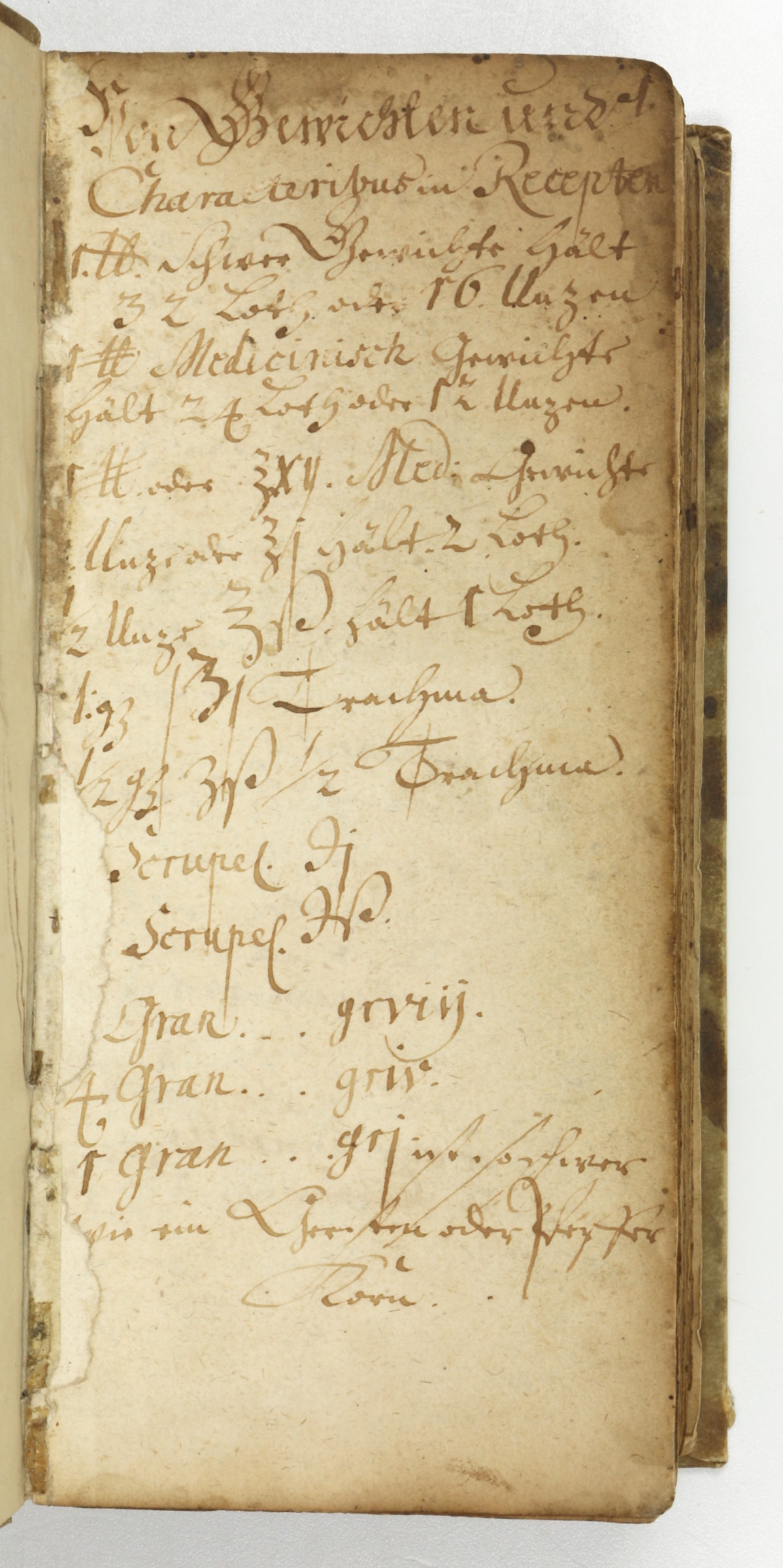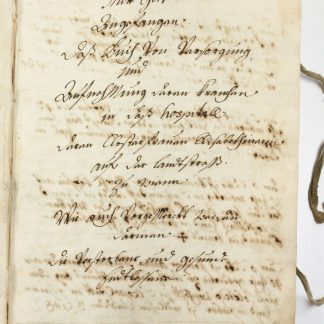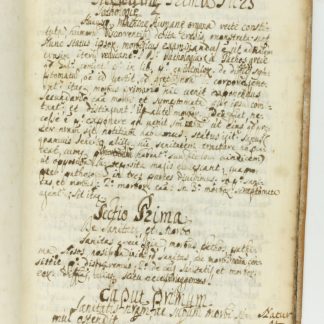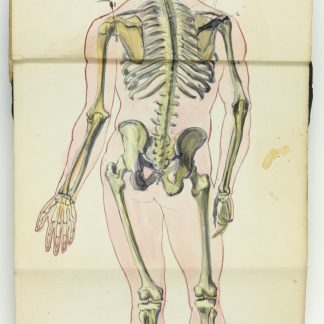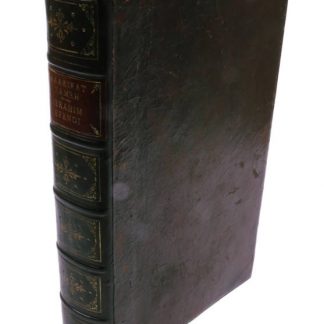[SOLD]
This item has sold. We are always interested in acquiring another copy or any item of comparable quality.
Treatment of tumors, piles, sexual and infectious diseases
Recipe compendium of a barber surgeon.
Tall 8vo (ca. 86 x 192 mm). German, French and Latin manuscript on paper in at least two or three hands. (342) pp., interleaved with 6 blank pages. Contemporary vellum.
Copious 17th century medical manual containing prescriptions for the treatment of various diseases, of tumors ("cartilaginose tumores"), haemorrhoids, skin diseases (tinea capitis: "Method de guerir la Tigne"), diseases of the eyes ("spots of the eyes", "pulvis oculorum") and ears ("pour la sourdite d'oreil"), sexual and infectious diseases (gonorrhoea, syphilis, malaria, spotted fever, dysentery), as well as of gangrene, scurvy, epilepsy, rheumatism, asthma, tapeworm infestation, hydropisia, with means to induce birth and to reduce menstrual bleeding. There are instructions for the production of plasters (emplastrum spermatis ranarum, santalinum, tacamahaca), ointments (balsamum peruvianum, sebum cervinum), tinctures, essences (tinctura Tartari, a heart-blood cleansing electuary, "Aqua Vitae contra Pestem, Melancoliam et Scorbutum"), powder ("Poudre de Cabaret", pulvis antepilepticus, pulvis asthmaticus, antispasmodicus hallensis), pills ("pillulaeanti febriles Heydemeyer"), purgatives or medicinal teas. In addition, there are brief treatises on the "Blut Regul", on the equipment of a barber surgeon, and on the unlucky days when medical interventions should be avoided ("Prognosticon D. D. Trunell of the unfortunate days of the year"). Occasionally the recipes seem to be based on written authorities ("Ces remedes sont recomandes par Etmüller" refers to Michael Ettmüller, 1644-83; "Doctor Weissbach's famous eye salve" probably refers to Christian Weißbach, 1684-1715), but more often the writer's sources are his own acquaintances ("Doctor Keller", "Mr Beker, chirurgien a Paris", "Mr Charnée Directeur de La Tannerie", "Le Pere Ministre Trinitaire", "Frere Christian d'Arlon", "Mdmselle Marchant").
A characteristic feature of the medical practice of the age is the mixture of knowledge gleaned from books with practical knowledge and a familiarity with more recent pharmacological achievements: Glauber's salt, Tacamahaca, Quinine ("Cortex Peruvianus", "Vor das Fieber Chin Chin"), with alchemical approaches (lapis magnesarsenicalis, arcanum corallinum, tisane royale, boule de mars) and elements of folk medicine (curative mole blood) or astromedicine (the "Prognosticon").
The manual would appear to have been begun around or slightly before the middle of the 17th century and was continued for about a century, probably by two or more generations of barber surgeons. While the first owner of the volume wrote exclusively in German, the subsequent owner travelled throughout France (Paris, Nancy) and present-day Belgium (Arlon).
Covers slightly warped; blue crayron scribbles to upper cover and flyleaf. Light browning and occasional inkstaining to pages. Provenance: Baron Ferdinand von Loën d'Enschedé (1833-99), Belgian senator and mayor, awarded the title of papal count in 1861 (his handwritten ownership of "Comte de Loën d'Enschedé" to flyleaf).

